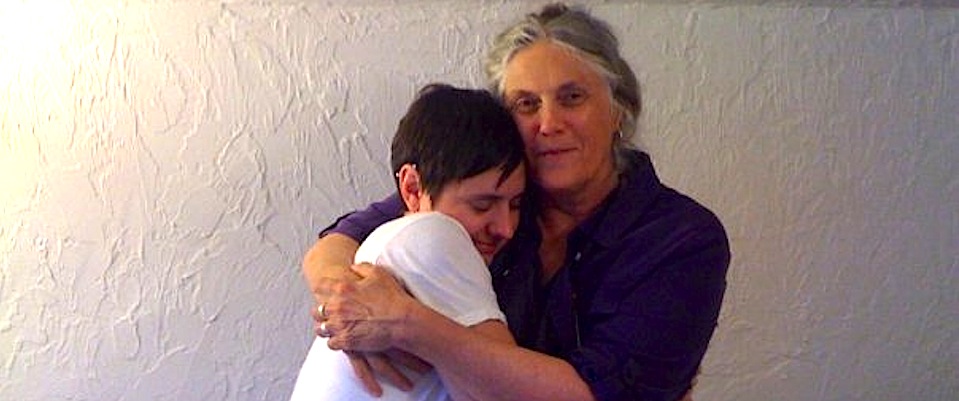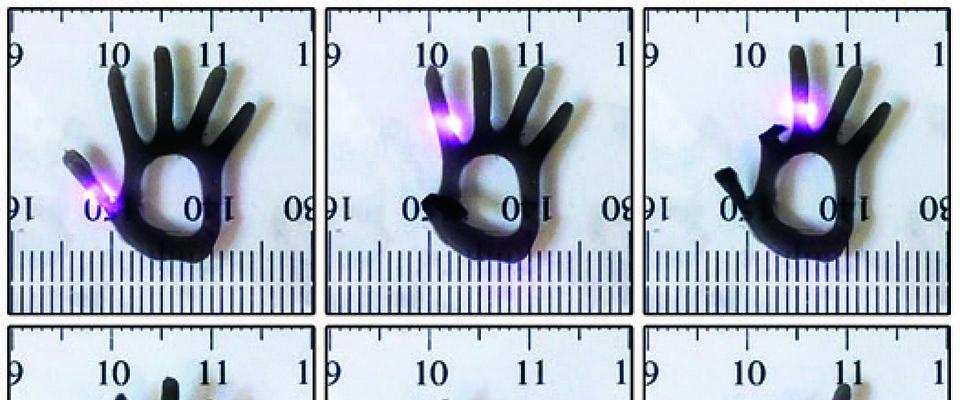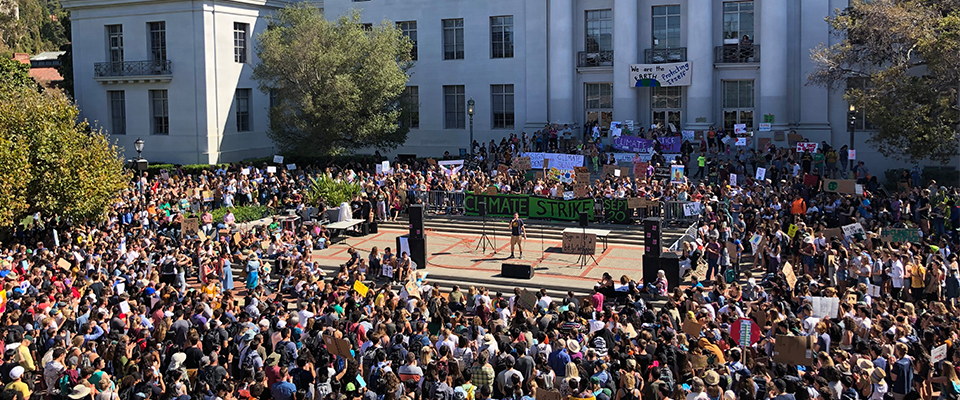My daughter, Laura, was a vibrant, witty and loving young woman who grew up in Vermont and California—earning a master’s in library science and eventually becoming executive assistant to the dean of Arts and Humanities at UC Berkeley. She was a writer, photographer and gifted musician who was close to her family and many devoted friends. In other words, she was a highly intelligent, responsible young woman with a bright future.
She was also a very secretive addict.
I am a mother who lost her 38-year-old daughter this year to an accidental and deadly combination of drugs and alcohol. I’m also a relative newcomer to the almost-daily media conversation about drugs, and must admit I wish I weren’t a part of it now. My credentials are loss and grief beyond anything ever imagined or experienced in my lifetime.
When Laura was in her mid-20s and living in San Francisco, she experimented with several toxic substances, among them cocaine and black tar heroin, a cheap street drug that is easy to obtain. Drugs such as marijuana, alcohol, and cocaine helped overcome her social reserve. She also liked to snort heroin (she never used needles) in the privacy of her home to experience, in her words, “a little taste of heaven.” Likely, she believed that she could control her habit and never thought it would kill her. With much personal effort and against the odds, she achieved sobriety for almost seven years.
She displayed only one of the stereotypical characteristics of someone using alcohol and drugs: She lied about using them.
I learned about the seriousness of my daughter’s addictions and her relapse only after she died. She displayed only one of the stereotypical characteristics of someone using alcohol and drugs: She lied about using them. Her instinct was to protect me from knowing that she was indulging again; she also needed to protect her drug habit. She undoubtedly experienced shame and self-recrimination when she slipped in and out of sobriety. Above all and ironically, she didn’t want us, her family, to see her as an addict.
Adopted at age 2, Laura was at particular risk for developing this disease. She was genetically predisposed to addiction from both birth parents and suffered intermittent bouts of anxiety and depression throughout her life. Her death was a tragic intersection of internal and external events that, under other circumstances or experienced by another person, might not have been fatal. But the coroner’s report concludes that mixing alcohol, cocaine and heroin during an all-night party suppressed her breathing and led to her death after she returned home. No one was there to help her.
Just one week before she died, I had visited Laura in Berkeley for a relaxed, very sweet vacation. She took me on a tour of the college and pointed out the building (Durant) where she worked. We traveled to the coast and visited friends and family in Sebastopol. During our time together, I saw no evidence of any drug use or addict behavior—she was healthy, happy, excited about her life and the direction it was taking. She did not seem depressed or overly anxious. When I asked her how she was doing (code for “Are you drinking? Smoking pot? Taking drugs?”), she assured me she was trying to quit cigarettes but clean in all other respects; I believed her and trusted my own observations because I simply wanted her to be healthy.
In retrospect, I was naïve and pathetically ill informed.
I know now that far from being solely a behavioral problem, addiction is a neurological disorder, essentially a brain disease, affecting reward and motivation centers. Depending on the person’s genetic and biological make-up as well as the quality and purity of the drug, death can be triggered by just one bad experience with heroin. I know that opioid prescription drugs are often the gateway to heroin use; pills lack the stigma of the street drug, but heroin is much cheaper and easier to obtain. I also know that marijuana, though not deadly or nearly as addictive, can be, for some teens and young adults, a stepping-stone to experimenting with more dangerous drugs. And I know only too well that a person who uses heroin, especially in combination with other drugs and alcohol, will experience cravings and symptoms that, without effective and ongoing treatment, can be lethal.
Prior to Laura’s death, I imagined an addict as someone who had no control over her addiction and stopped at nothing to maintain it: unemployment, homelessness, criminal behavior, social dysfunction. But Laura did not fit this image of a hopeless junkie; quite the opposite. She had never lost a job, never been arrested, never been to rehab, never broken with her family or stolen from anyone. In fact, she was meticulous, organized, disciplined and attentive to her emotional and physical needs.
She was also dedicated to her job and colleagues at Berkeley, where she was appreciated and respected. Laura’s boss, Anthony Cascardi, called me to express his personal sorrow at her death. “Laura had the ability to get along with everyone at every level of college life, from the custodians to the president. She was very kind to everyone. I’ll truly miss her,” he said. At a memorial service attended by more than 50 colleagues, several people described Laura’s capacity to cheer people up. One person said that when a call came in from her, everyone wanted to answer it because they knew they’d feel good after speaking with her. Someone else pointed out that she was very efficient, but never officious. Another noticed how she remained relaxed and casual, never stressed, always easygoing.
My daughter seemed to everyone—her friends, colleagues, and family—to have her life together. What we didn’t know is that on many weekends she partied hard. During the workweek, however, she refrained from using drugs or alcohol. After several years of privately coping with her addictions, she underwent counseling and managed to stay sober from ages 28-35.
Sadly, I found out weeks after Laura’s death that, while I was visiting her, she had reached out to a sobriety group for help because she felt she was starting to lose control. She was frightened.
But when she moved from the East Coast back to California in 2011, she felt the familiar pull again. “I’ve been sober for a long time and I think I can drink again without getting hooked,” she confided to a friend. For Laura, however, drinking led to drugs and soon she was in a pattern of using and quitting, using and quitting. She clearly liked to drink and take drugs recreationally, but she did not want to let them take over her life. Her intermittent depression and anxiety, which she talked about with few people, dovetailed dangerously with her desire for the relief and high that drugs provided. Sadly, I found out weeks after Laura’s death that, while I was visiting her, she had reached out to a sobriety group for help because she felt she was starting to lose control. She was frightened. We will never know if she would be alive today had she lived long enough to take this crucial step toward recovery.
When I received the call from the deputy coroner in Berkeley that Laura had died under suspicious circumstances, the idea that her death was drug related seemed an impossibility, especially because I had just spent time with her and witnessed how healthy and upbeat she was. The autopsy and toxicology report took three months to complete and, during that entire time, despite mounting evidence from friends who knew her well, I implored everyone not to draw conclusions without solid evidence from the coroner. I tried to suspend my worst fears amid the torrent of grief that still has not abated. I dismissed her earlier drug use as an unlikely cause.
The toxicology report, however, detailed the presence of four toxic substances, including heroin. Blindsided and traumatized, I found no way to reconcile the Laura I thought I knew with the Laura whose life and death had become a mystery to me. In the weeks following her death, I was obsessed with the thought that I should have somehow known she had fallen back into addiction and that I should have found a way to help her. As her mother, I felt that I had failed to protect her, had failed to stave off the dangers that took her precious life. Although I don’t believe I caused her death, I knew dangerously little about the power of her addiction and how strong a grip it had over her.
Now that ten months have passed, I still haven’t fully grasped that my daughter is gone. I’m told this truth can take years to accept. That Laura realized she was out of control and sought help provides some degree of comfort, but really not very much and not for very long. In truth, there is no comfort to be found anywhere for this loss; the grief I feel is beyond description.
Several weeks after I received word of Laura’s death, I posted a note on our local ListServ asking if people knew of a group for grieving parents. Several people wrote to tell me about The Compassionate Friends, which meets monthly. These parents, all of whom have lost children, understand without explanation the depth of this loss. Through this group, which has chapters nationwide and hosts a valuable website, I’ve learned that I am not alone. I had no idea how many of us there are.
We must confront not only the stark loss of someone we loved dearly but also the stigma that accompanies it. Many people still hold the false belief that drug addiction is not only a willful behavior but also one that deserves punishment. Our legal system has continued to reinforce this idea for more than 50 years. Rather than offering comprehensive treatment, rehabilitation and recovery programs to combat an intractable illness, we judge parents, blame and imprison drug users, offer inadequate treatment, and underfund programs that could help them recover and stay well.
This draconian approach is beyond counter-intuitive—in fact, until we understand and treat addiction as the chronic and pernicious disease it is and commit to finding and funding innovative strategies for dealing with it, we can’t hope to find a solution to the grave problem it presents to all of us. Providing first responders and others with Narcan (Naloxone), a drug that immediately reverses the effects of a heroin overdose, will certainly save some lives, but without ongoing support and treatment, these young people will most likely start using again. And the next overdose—perhaps a deadly one—may be just weeks, if not days away.
In the past, it was easy to associate drug and alcohol addiction with urban poverty, lack of education, violence and despair. No longer. Almost every state is reporting exponential increases in near-fatal and fatal drug and alcohol poisoning, and all are scrambling to find solutions to the crisis.
My life is forever changed by my daughter’s death. As a mother, it is my fervent wish that not one more life is lost to this crippling disease and not one more parent suffers this agony. We must above all be vigilant and not assume that our children are safe and healthy just because they appear to be doing well. We must not be afraid to ask them the hard questions, to share painful stories, and to intervene if there is even a suspicion of drug use. We must be willing to agree that heroin addiction is a disease that can be treated and managed, and we must move from a position of condemnation and fear to one of compassion and action. Above all, we need to be willing to support research, facilities, and treatment approaches that are proving successful.
Awakening to the possibility that the next child to overdose and die could be our own is a thought so terrifying that our natural inclination is to turn away from it. But we need instead to lean directly into it with all our collective weight.
Linda Mulley is an autism educator who has taught at the University of Vermont, Dartmouth College and the Vermont Higher Education Collaborative; she is the co-author of the book All Children Matter. Laura Mulley was born in Brattleboro, VT, in 1976. She died in Berkeley, CA, on March 1, 2015. Linda can be reached at llmulley@gmail.com.





















